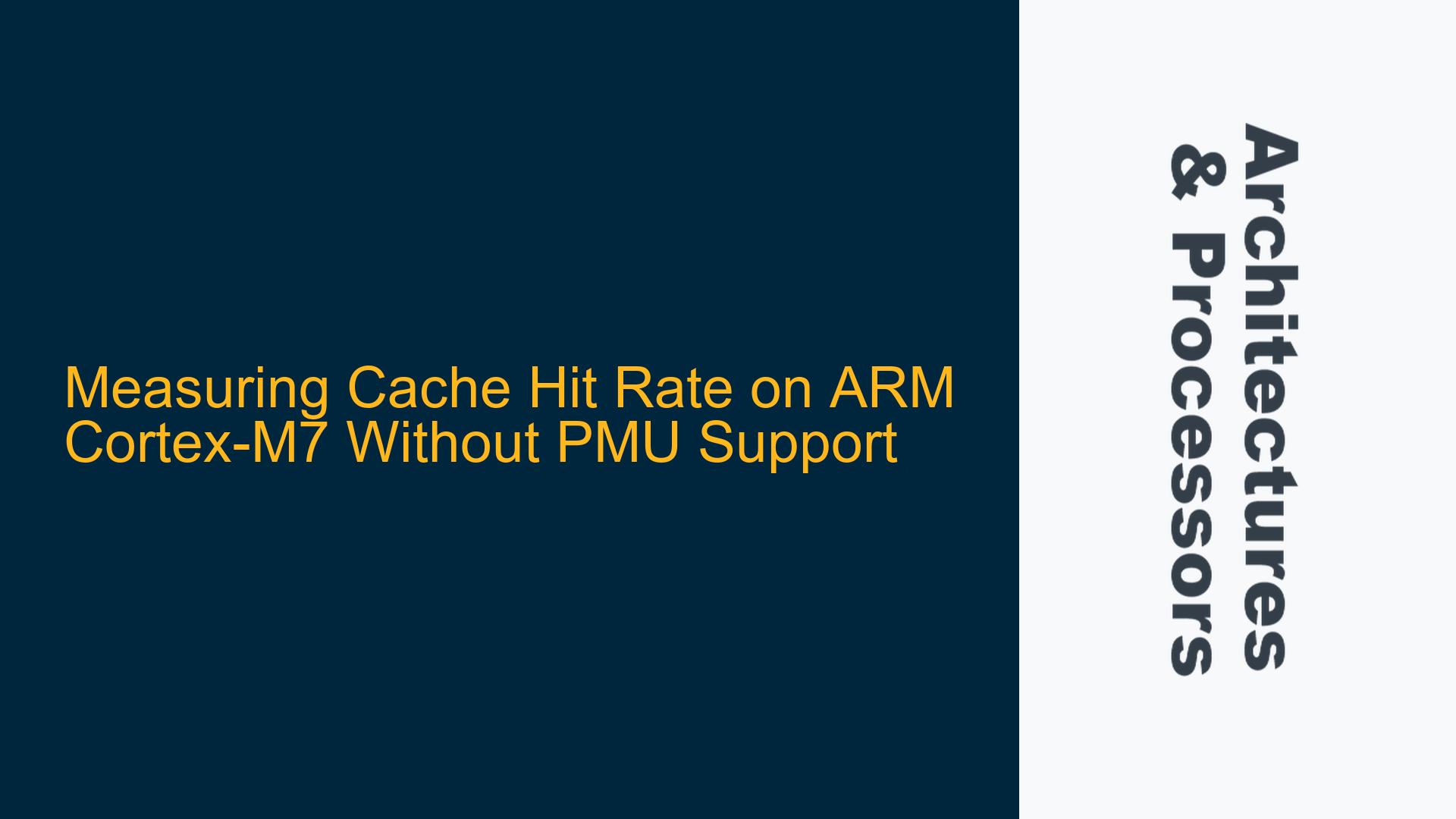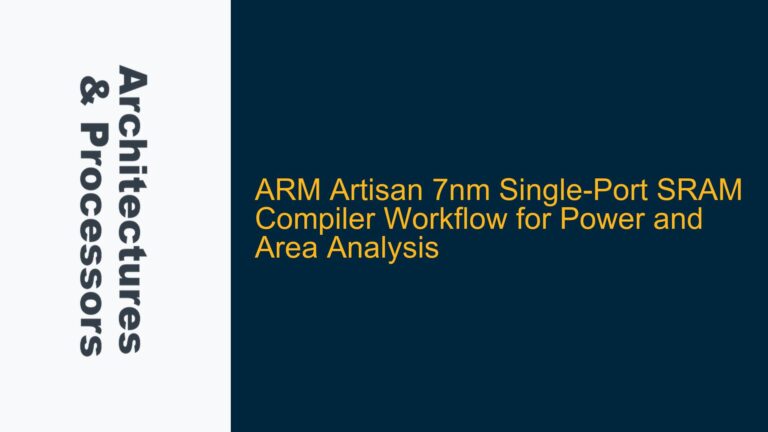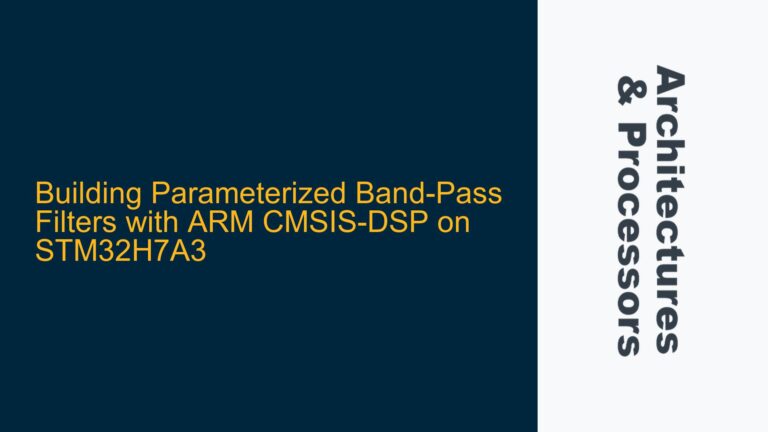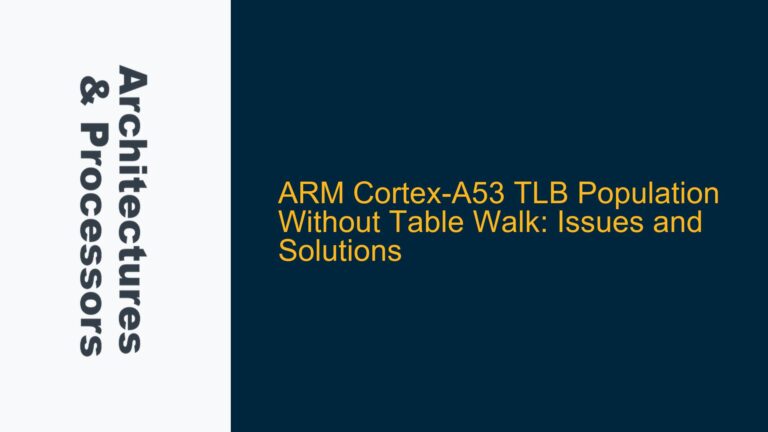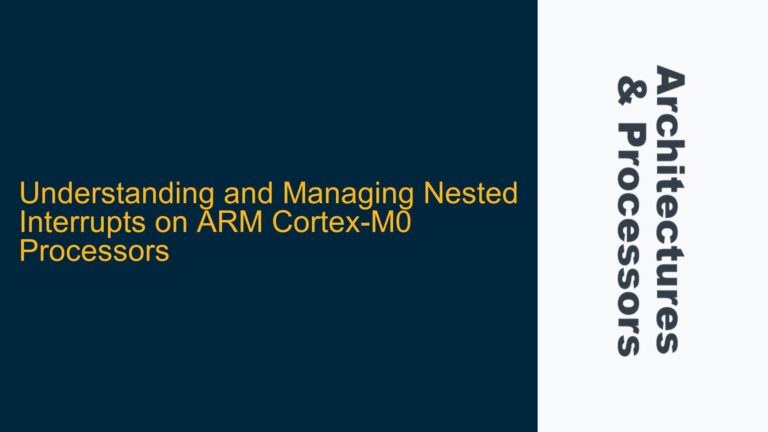ARM Cortex-M7 Cache Hit Rate Measurement Challenges
The ARM Cortex-M7 processor is a high-performance embedded processor designed for real-time applications, featuring a Harvard architecture with separate instruction and data buses, and optional instruction and data caches. Unlike higher-end ARM processors such as the Cortex-R5, the Cortex-M7 does not include a Performance Monitoring Unit (PMU). The absence of a PMU poses a significant challenge for developers who need to measure cache hit rates, as PMUs are typically used to provide detailed performance metrics, including cache hits and misses. Cache hit rate is a critical metric for understanding the efficiency of memory access patterns and optimizing system performance.
The Cortex-M7’s cache subsystem is designed to improve performance by reducing the latency of memory accesses. The processor supports up to 64 KB of instruction cache (I-cache) and 64 KB of data cache (D-cache), both of which are configurable. The caches are organized in lines, typically 32 bytes in size, and use a set-associative mapping scheme. The cache hit rate is defined as the ratio of cache hits to total cache accesses, where a cache hit occurs when the requested data or instruction is found in the cache, and a cache miss occurs when it must be fetched from main memory.
Without a PMU, developers must rely on alternative methods to estimate or infer cache hit rates. These methods often involve indirect measurements, such as profiling execution time, analyzing memory access patterns, or using software-based performance counters. However, these approaches are inherently less precise than hardware-based measurements and may require significant effort to implement and validate.
Lack of Hardware Performance Monitoring Unit (PMU) and Indirect Measurement Techniques
The primary reason for the difficulty in measuring cache hit rates on the Cortex-M7 is the absence of a PMU. A PMU is a hardware block that provides detailed performance metrics, including cache hits, cache misses, branch predictions, and cycle counts. On processors like the Cortex-R5, the PMU can be programmed to count specific events, allowing developers to directly measure cache hit rates. However, the Cortex-M7, being a microcontroller-class processor, omits the PMU to reduce cost and complexity.
In the absence of a PMU, developers must resort to indirect measurement techniques. One common approach is to use software-based profiling to estimate cache performance. This involves instrumenting the code to measure execution time for specific functions or code blocks and correlating these measurements with known memory access patterns. For example, if a function is known to access a large array repeatedly, the execution time can be used to infer cache hit rates. A shorter execution time suggests a higher cache hit rate, while a longer execution time suggests more cache misses.
Another approach is to use the Cortex-M7’s built-in cycle counter, the DWT (Data Watchpoint and Trace) CYCCNT register, to measure the number of cycles taken for specific operations. By comparing the cycle counts for memory accesses with and without cache enabled, developers can estimate the cache hit rate. However, this method requires careful calibration and may not provide accurate results for all workloads.
A third approach is to use simulation tools to model the Cortex-M7’s cache behavior. Tools like ARM’s Fast Models or third-party simulators can simulate the processor’s cache subsystem and provide detailed statistics on cache hits and misses. While simulation can provide accurate results, it requires a detailed model of the target system and may not be feasible for all development environments.
Implementing Software-Based Cache Profiling and Simulation
To measure cache hit rates on the Cortex-M7 without a PMU, developers can implement software-based cache profiling techniques. The first step is to instrument the code to measure execution time for specific functions or code blocks. This can be done using the DWT CYCCNT register, which provides a cycle-accurate counter. By reading the CYCCNT register before and after a code block, developers can calculate the number of cycles taken for execution.
For example, consider a function that processes a large array. The execution time of this function can be measured with and without cache enabled. If the execution time is significantly shorter with cache enabled, this suggests a high cache hit rate. Conversely, if the execution time is similar with and without cache, this suggests a low cache hit rate. This method provides a rough estimate of cache performance but may not be accurate for all workloads.
Another technique is to use software-based performance counters to track memory accesses. This involves modifying the code to increment a counter each time a memory access occurs. By comparing the number of memory accesses with the number of cache hits (estimated from execution time), developers can infer the cache hit rate. However, this method requires significant code modification and may introduce overhead that affects performance.
For more accurate results, developers can use simulation tools to model the Cortex-M7’s cache behavior. ARM’s Fast Models provide a cycle-accurate simulation of the Cortex-M7 processor, including the cache subsystem. By running the target application on the simulator, developers can obtain detailed statistics on cache hits and misses. The simulator can also be used to experiment with different cache configurations, such as cache size and associativity, to optimize performance.
In addition to simulation, developers can use trace tools to analyze memory access patterns. Trace tools like ARM’s CoreSight or third-party solutions can capture detailed information about memory accesses, including addresses, data values, and timing. By analyzing the trace data, developers can identify patterns that lead to cache misses and optimize the code to improve cache performance.
Finally, developers can use static analysis tools to predict cache behavior. These tools analyze the code and estimate the cache hit rate based on the memory access patterns. While static analysis cannot provide exact results, it can help identify potential bottlenecks and guide optimization efforts.
In conclusion, while the ARM Cortex-M7 does not include a PMU, developers can still measure cache hit rates using software-based profiling, simulation, and trace tools. These methods require careful implementation and validation but can provide valuable insights into cache performance and help optimize system performance.
